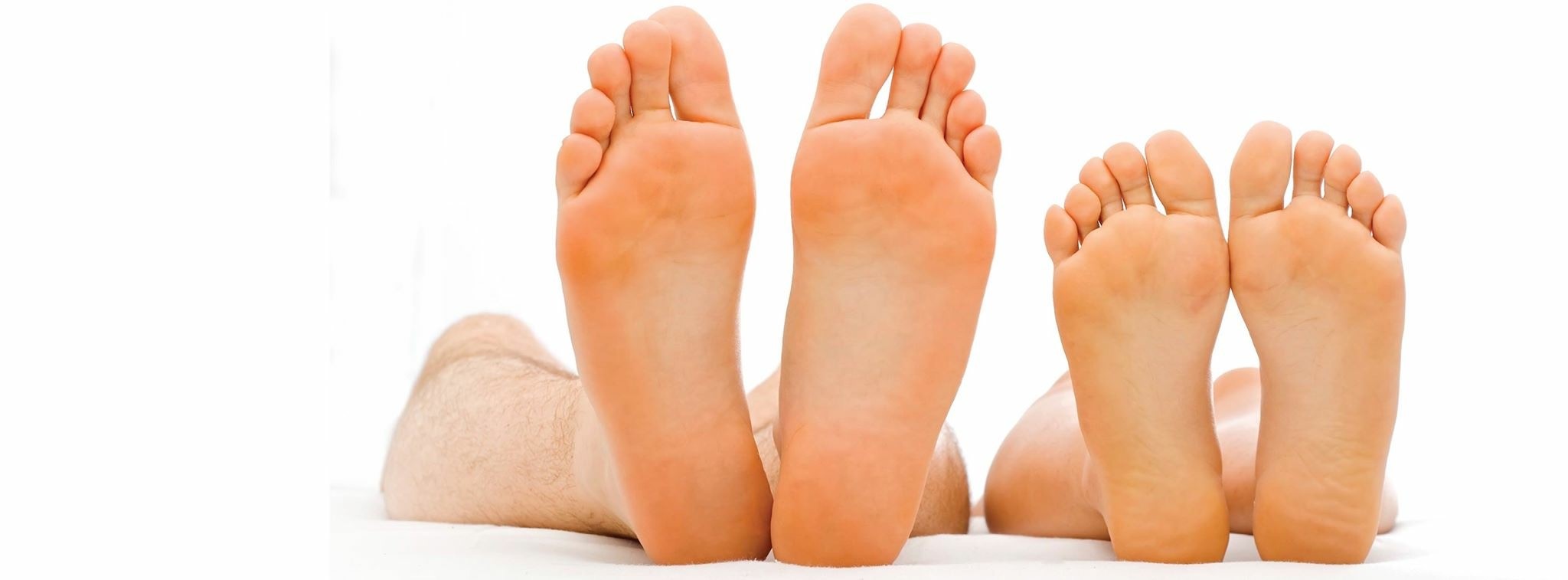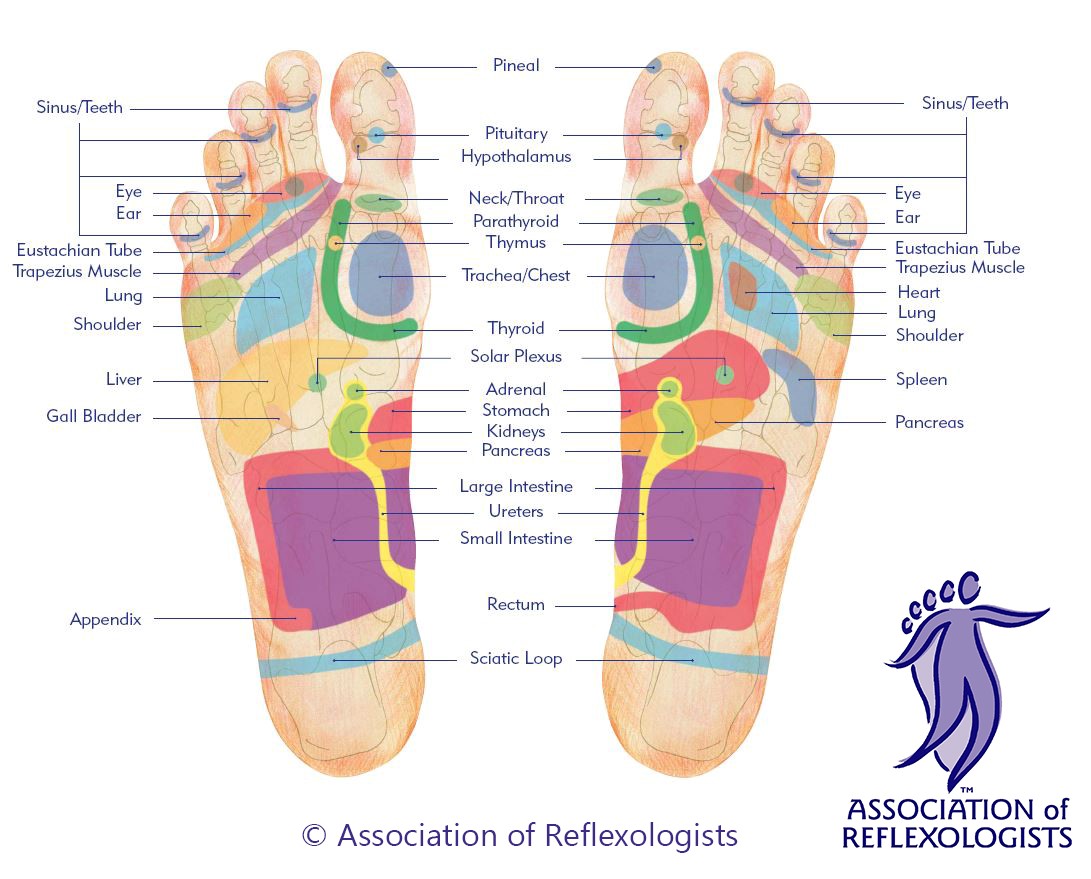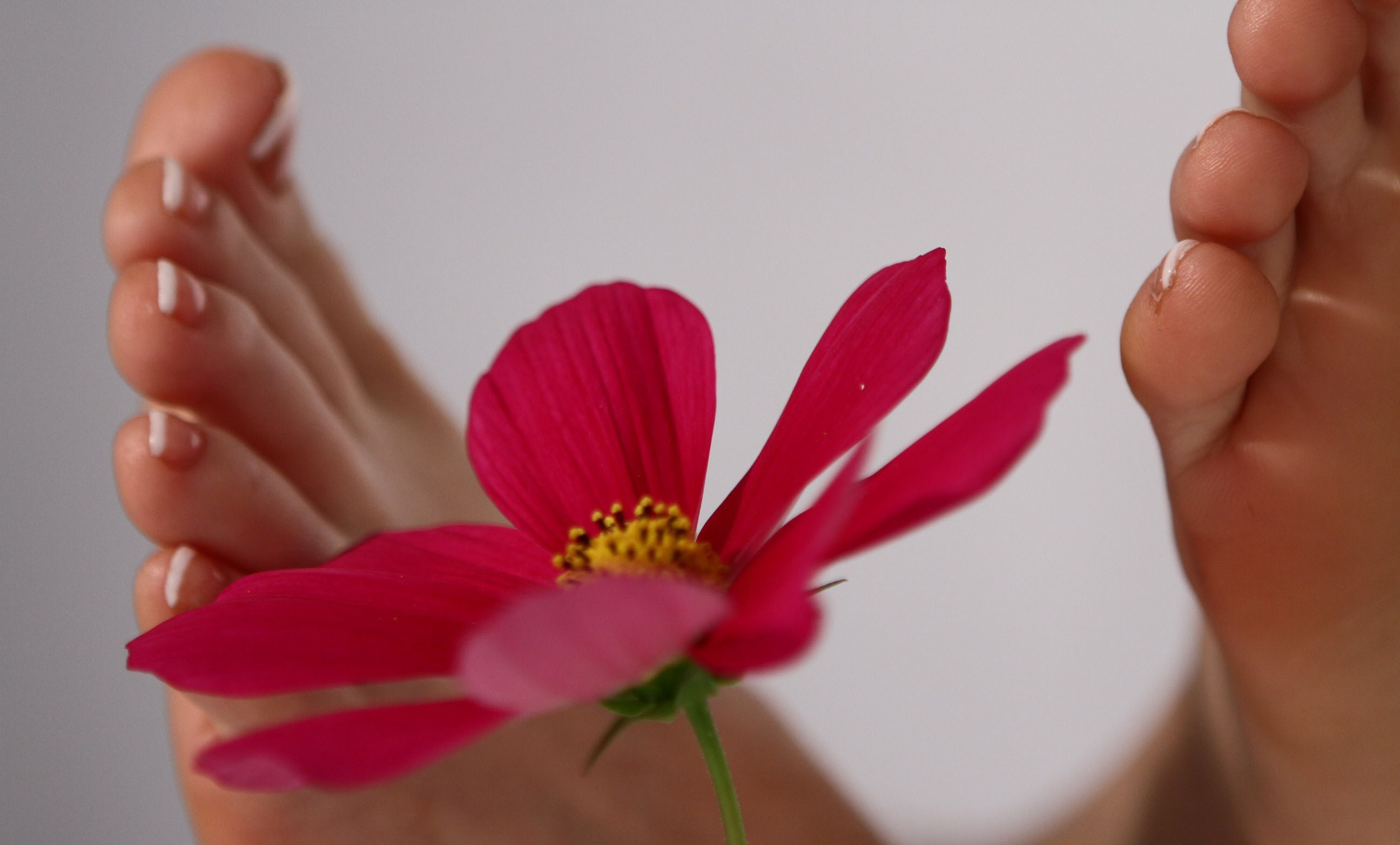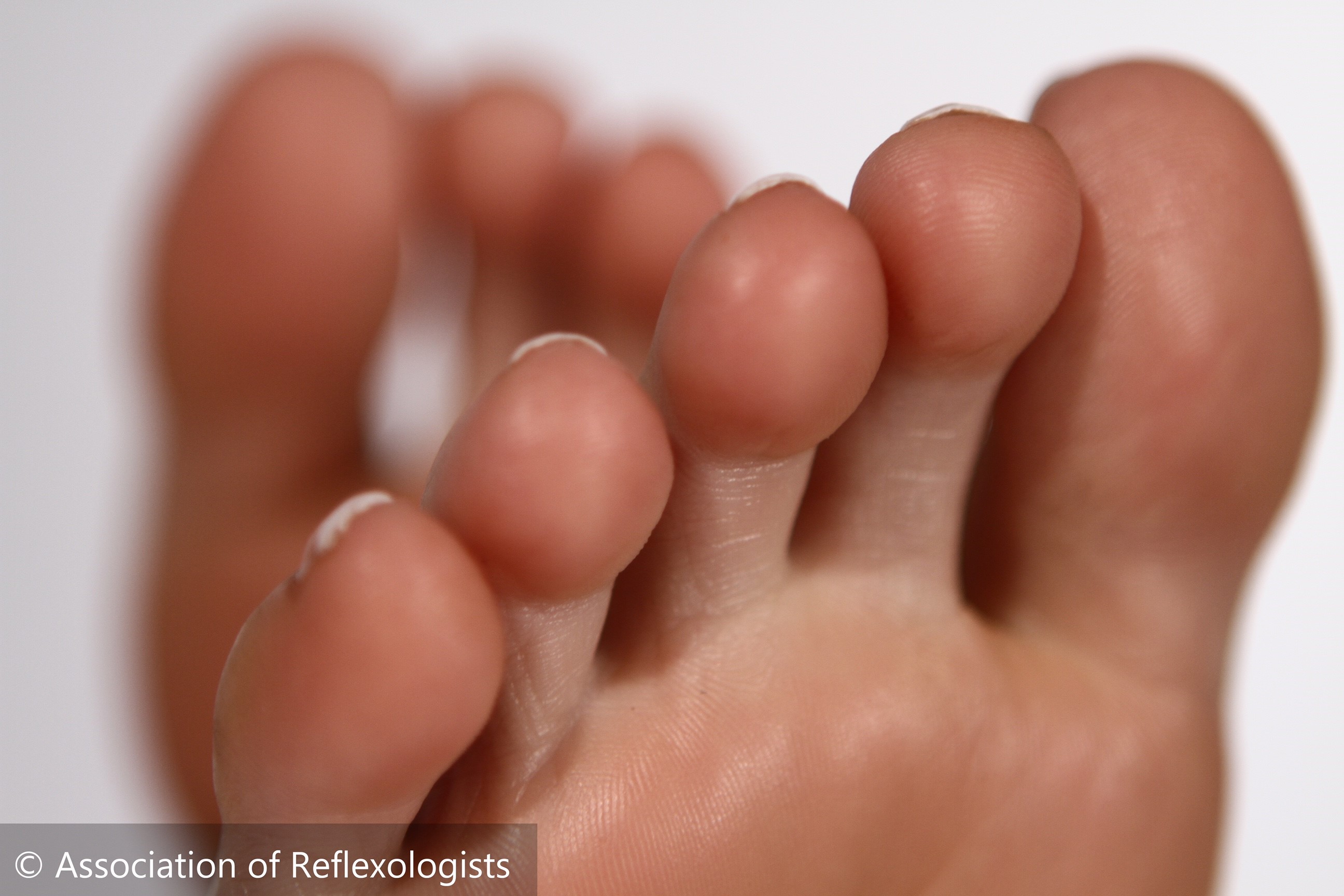
About Reflexology
-
What is Reflexology?
Reflexology is a wonderfully relaxing therapy, suitable for all ages, that may help to bring relief to a wide variety of acute and chronic health problems.
Reflexologists believe that the feet mirror the body, and the organs, systems and glands of the body are mapped onto areas of the feet known as reflex points, as shown in the foot map below. Reflexologists work on all of the feet, simulating the reflex points to bring about a response in the corresponding part of the body.
The feet contain an intricate network of nerves. Applying gentle pressure to the reflex points on the feet stimulates the nerves and sends calming messages via the central nervous system around the body. This not only enhances relaxation and helps the internal organs and their associated systems function well, but also increases blood supply and hence improves circulation.

-
What are the benefits?
Reflexology reduces stress and induces deep relaxation
In this day and age, we find we are juggling so much that stress can creep up on us with seemingly little warning. Much illness is stress related, as stress can compromise our immune system, and make us more susceptible to illness and disease.
Reflexology can support a reduction in stress by producing a state of deep relaxation, and providing you with the opportunity to spend time in a "safe place" away from everyday worries and frustrations. When a reflexologist stimulates the 7000 nerves in the feet we encourage an improvement in circulation, and hence blood flow, and the opening and clearing of neural pathways to help the body return to its natural rhythm. In turn the mind and spirit are brought back into balance.
Reflexology improves circulation
Tension and stress tighten up the vessels carrying blood through the body, so reducing the oxygen and nutrients that flow to all the cells in the body, and reducing the removal of waste products and other toxins. Reflexology supports a reduction in the stress and tension, and helps to improve circulation, so allowing miles of cardiovascular vessels to conduct the flow of blood naturally and easily.

-
Reflexology History
Reflexology has been around for longer than you might think
Reflexology is thought to date back to the time of the ancient Egyptians, an interesting indication that the benefits of reflexology have been appreciated for thousands of years. However, most is known about the development of reflexology in the last two centuries.
In the mid-19th century Sir Henry Head proved that there was a neurological relationship between pressure applied to different areas of the skin and the internal organs. This was the start of reflexology as we know it today. Sir Henry's research was enhanced by Sir Charles Sherrington who showed that all organs can be affected by stimulating an area on the surface of the body. Further progression was made when in 1917 Dr Williams Fitzgerald discovered zone theory. He concluded that applying pressure in one part of the ten zones in the body, each one containing one of the ten fingers and toes, could affect everything else within that zone.
We owe much of our understanding of reflexology to Eunice Ingham, who in the 1930s further developed Dr Fitzgerald's theory, concentrating on the feet. She observed that "congestion" or tension in a part of the foot mirrors tension in a corresponding part of the body. By spending considerable time working with numbers of patients feeling the same areas of pain, she was able to develop a more accurate map of the foot, showing the association of each point on the foot with an area of the body.
Eunice Ingham went on to develop what is now known as the Ingham method, on which modern reflexology is based. This involves applying pressure by thumb walking, i.e. where the thumb or finger bends and straightens whilst maintaining a constant pressure on the area of foot being worked on.
